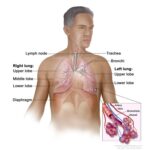Understanding chiropractic diagnosis codes is crucial for accurate billing, record-keeping, and ensuring proper communication within the healthcare system. As we move into 2024, staying updated with the latest codes is more important than ever for chiropractic professionals. This guide provides a comprehensive overview of chiropractic diagnosis codes for 2024, focusing on key changes and essential information for practitioners.
Navigating the ICD-10-CM for Chiropractic Care in 2024
Chiropractic diagnosis codes are primarily based on the International Classification of Diseases, Tenth Revision, Clinical Modification (ICD-10-CM). This system is updated annually, and 2024 brings specific revisions that impact chiropractic coding. It’s vital to understand these updates to maintain compliance and optimize practice revenue.
Key Categories of Chiropractic Diagnosis Codes
Chiropractic care frequently addresses musculoskeletal and nervous system disorders. Therefore, relevant ICD-10-CM chapters are essential for accurate coding. These include:
-
Chapter XIII: Diseases of the Musculoskeletal System and Connective Tissue (M00-M99): This chapter is extensively used in chiropractic practices, covering conditions such as back pain, neck pain, sciatica, sprains, strains, and arthritis. Specific categories within this chapter are frequently utilized, such as:
- M54 – Dorsalgia (Backache): For various types of back pain, including lumbago and unspecified back pain.
- M47 – Spondylosis: Degenerative conditions of the spine.
- M99 – Biomechanical lesions, not elsewhere classified: Specifically relevant to chiropractic, addressing subluxations and joint dysfunction.
-
Chapter VI: Diseases of the Nervous System (G00-G99): This chapter is relevant for neurological conditions treated by chiropractors, such as:
- G50-G59 – Nerve, nerve root and plexus disorders: Including conditions like carpal tunnel syndrome and other nerve compressions.
- G80-G83 – Cerebral palsy and other paralytic syndromes: While less frequent, some chiropractic treatments may address aspects of these conditions.
-
Chapter XIX: Injury, Poisoning and Certain Other Consequences of External Causes (S00-T88): Essential for coding injuries resulting from accidents, falls, or sports, which are common reasons patients seek chiropractic care. This includes:
- S-codes: Codes for injuries to specific body regions (e.g., S10-S19 for neck injuries, S20-S29 for thorax injuries, S30-S39 for abdomen, lower back, lumbar spine and pelvis injuries).
- T-codes: Codes for injuries to unspecified body regions, poisoning and certain other consequences of external causes.
Alt text: The American Dental Association website homepage, a resource for dental professionals, shown as an example of a professional organization providing coding and terminology standards, similar to how chiropractic organizations provide guidance on chiropractic diagnosis codes.
2024 Code Updates and Revisions Relevant to Chiropractic
Staying informed about annual ICD-10-CM updates is paramount. While specific changes for 2024 related directly to chiropractic diagnosis codes need to be verified upon official release, the general process involves reviewing updates within the musculoskeletal, nervous system, and injury chapters.
Where to find updates:
- Official ICD-10-CM resources: The CDC’s National Center for Health Statistics (NCHS) is the authoritative source for ICD-10-CM in the United States. Their website provides updates and official code sets.
- Chiropractic professional organizations: Organizations like the American Chiropractic Association (ACA) and state chiropractic associations often provide summaries and interpretations of coding updates relevant to chiropractic practice.
- Coding and billing software and services: Vendors of chiropractic EHR and billing software typically incorporate annual code updates into their systems and provide guidance to users.
Common Chiropractic Diagnosis Codes and Examples
Here are some frequently used chiropractic diagnosis codes, illustrating their application:
- M54.5 – Low back pain: A very common code for patients presenting with lower back discomfort.
- M54.2 – Cervicalgia: Neck pain.
- M53.1 – Cervicobrachial syndrome: Neck pain radiating into the arm.
- M99.01 – Segmental and somatic dysfunction of cervical region: Used to describe biomechanical lesions or subluxations in the neck.
- M99.02 – Segmental and somatic dysfunction of thoracic region: Biomechanical lesions or subluxations in the thoracic spine.
- M99.03 – Segmental and somatic dysfunction of lumbar region: Biomechanical lesions or subluxations in the lumbar spine.
- S93.40XA – Sprain of unspecified ligament of ankle joint, initial encounter: For ankle sprains when the specific ligament is not identified, during the initial visit.
Example Scenarios:
-
Patient presents with neck pain radiating down the left arm. Diagnosis codes might include:
- M54.2 (Cervicalgia)
- M53.1 (Cervicobrachial syndrome)
- Potentially a code for nerve compression if diagnosed.
-
Patient involved in a car accident reports whiplash and mid-back pain. Diagnosis codes might include:
- S16.1XXA (Strain of muscle, fascia and tendon at neck level, initial encounter)
- S29.012A (Strain of muscle and tendon of posterior wall of thorax, initial encounter)
- M99.02 (Segmental and somatic dysfunction of thoracic region)
Best Practices for Chiropractic Diagnosis Coding in 2024
- Specificity is key: Code to the highest level of specificity possible. Using more specific codes improves accuracy and reduces claim denials.
- Document thoroughly: Ensure your clinical documentation clearly supports the diagnosis codes chosen. Detailed notes are essential for audits and claim reviews.
- Stay updated: Regularly check for updates to ICD-10-CM codes and guidelines, especially at the beginning of each year.
- Utilize coding resources: Employ coding books, software, and online resources to ensure accuracy. Consider professional coding education and certifications.
- Seek clarification when needed: If unsure about the correct code, consult with coding experts, professional organizations, or payers for guidance.
Conclusion
Accurate and up-to-date chiropractic diagnosis coding is a cornerstone of successful practice management. By understanding the ICD-10-CM system, staying informed about annual updates for 2024, and adhering to best practices, chiropractic professionals can ensure compliant billing, effective communication, and optimal patient care. Continuous education and vigilance are essential in navigating the evolving landscape of medical coding.
